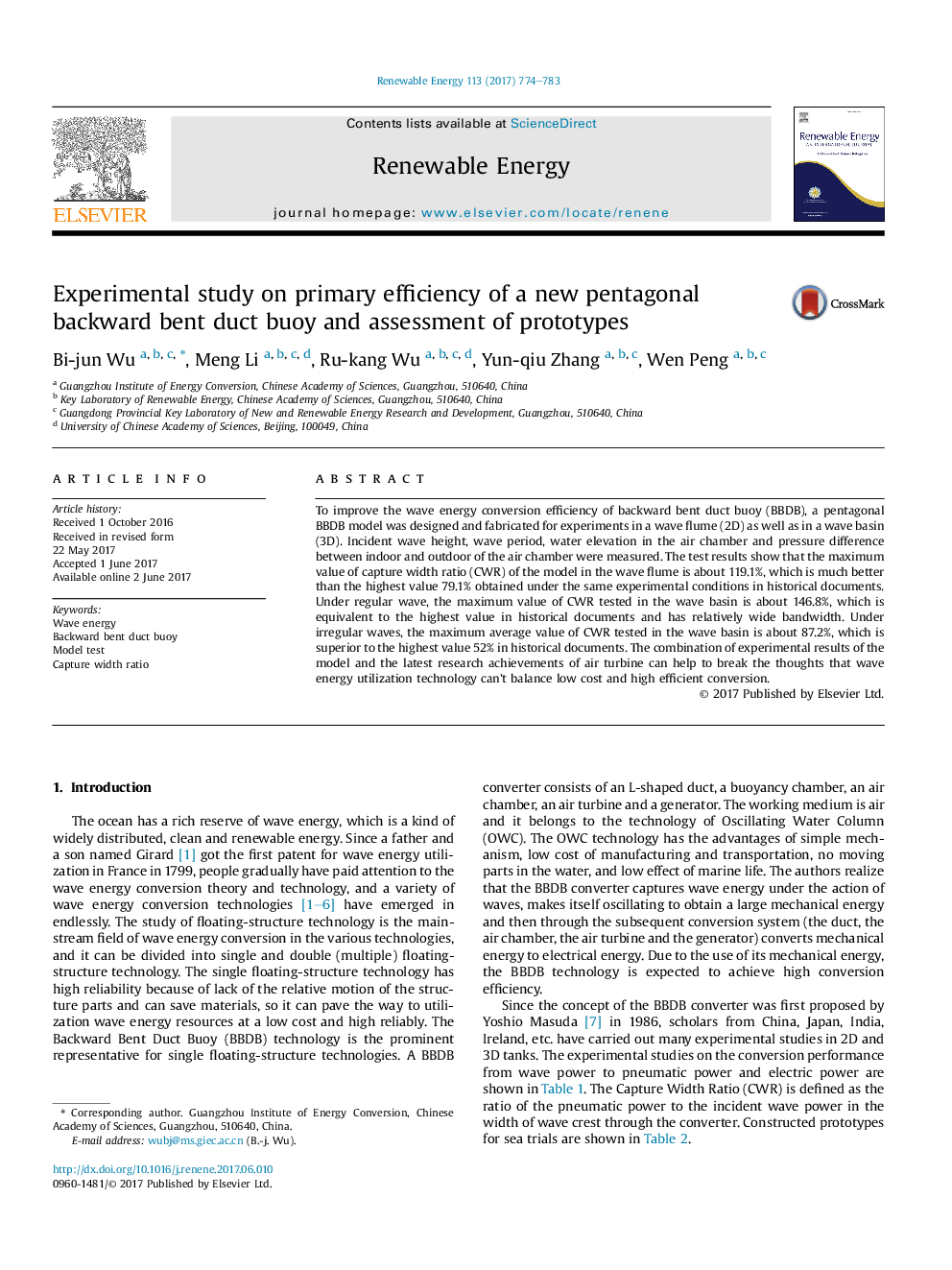| Article ID | Journal | Published Year | Pages | File Type |
|---|---|---|---|---|
| 4926071 | Renewable Energy | 2017 | 10 Pages |
Abstract
To improve the wave energy conversion efficiency of backward bent duct buoy (BBDB), a pentagonal BBDB model was designed and fabricated for experiments in a wave flume (2D) as well as in a wave basin (3D). Incident wave height, wave period, water elevation in the air chamber and pressure difference between indoor and outdoor of the air chamber were measured. The test results show that the maximum value of capture width ratio (CWR) of the model in the wave flume is about 119.1%, which is much better than the highest value 79.1% obtained under the same experimental conditions in historical documents. Under regular wave, the maximum value of CWR tested in the wave basin is about 146.8%, which is equivalent to the highest value in historical documents and has relatively wide bandwidth. Under irregular waves, the maximum average value of CWR tested in the wave basin is about 87.2%, which is superior to the highest value 52% in historical documents. The combination of experimental results of the model and the latest research achievements of air turbine can help to break the thoughts that wave energy utilization technology can't balance low cost and high efficient conversion.
Related Topics
Physical Sciences and Engineering
Energy
Renewable Energy, Sustainability and the Environment
Authors
Bi-jun Wu, Meng Li, Ru-kang Wu, Yun-qiu Zhang, Wen Peng,
